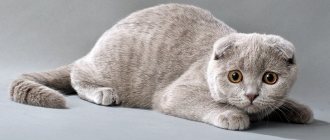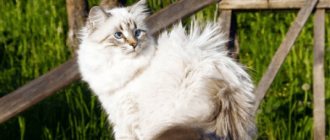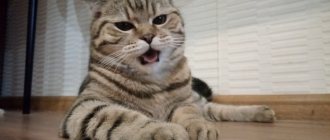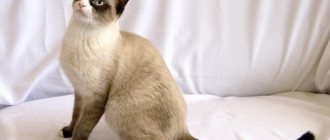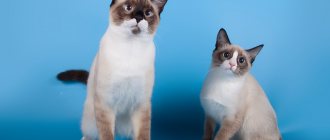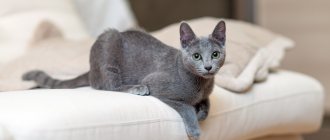Dear friends !!!
Here comes the magical, fabulous and most beloved and long-awaited holidays of the year. I, the head of the Snow Angel nursery and my tigers, sincerely congratulate you on the New Year 2022, Merry Christmas!!! Happy Year of the Tiger! On soft, strong paws, silently and gracefully, he is already approaching. May the year of the Tiger give you strength, courage, self-confidence, swiftness and invincibility! Let the unfinished be completed, the planned come true, the desired come true! May this year be one of the happiest in your life, and may the authoritative, decisive and courageous patron of the year give each of you the opportunity to make all your dreams come true. Live all year under the protection of the Tiger!! Happy year of new victories, zeal and success, Happy Year of the Tiger! We wish you incredible energy and tireless courage, tiger grace and greatness, true happiness and high financial wealth and prosperity, excellent health and the most sincere love!!!
Do you dream of a devoted, affectionate and faithful friend?! Welcome to the Snow Angel nursery!
Our monokentery Snow Angel is the only one in Russia and Moscow that has been breeding this unusual breed of Snow Shu cats at the Highest Level for many years.
Nursery Snow Angel is pleased to welcome you to the pages of our website. What is a nursery? In most cases, the breeder is a passionate person who devotes himself entirely to the idea of developing his breed. This person is able to spend a lot of money on his animals and on the development of the nursery, for the sake of constant improvement of the breed's qualities, he is ready to travel the longest trips to bring a new sire, specially studying genetics and veterinary medicine, and bearing the proud name of “felinologist” or “cynologist”. This person is always ready in the future to communicate with those who purchased a pet from him, to give advice and recommendations, this is a person who is not indifferent to the further fate of the animal he sold.
Dear friends, subscribe to our Instagram and stay up to date with all the news in our nursery!
Origin story
“Snowshoe (Snow-shu)” translates as “snow shoes.” Beautiful, is not it? And the breed itself is a real work of art. It appeared in the middle of the last century, when breeder Dorothy Haidins-Doherty discovered a wonderful trinity in her next litter of kittens: kittens whose paws seemed to be shod in milky white ballet shoes.
It looked so cute that the owner decided to consolidate the result and began experimenting: mixing the American Shorthair and Siamese breeds. The work went on long and hard, and there were some disappointments. Dougherty was upset by the refusals of large felinological organizations to register the breed and she refused further work.
The abandoned baton was picked up by American Vicky Olander. Even more problems befell her: the breed was recognized, a standard was drawn up, and even allowed to participate in exhibition activities, but for some reasons the Snowshoe found itself on the verge of extinction several times, and only large financial investments and outside help helped to stay afloat.
The only nursery in Russia is located in Moscow. The second option is private breeders (in this case, you should trust only sellers whose reputation can be verified). Kittens should be adopted at the age of 3-4 months: by this time they already have all the main characteristics of the breed, in addition, they already know how to eat independently, go to the toilet and sharpen their claws on a scratching post. Signs of a healthy animal: soft belly, clean and dry eyes, nose and ears, clean bottom, activity and playfulness.
History of the breed
But in fact, this cat is the result of the appearance of a rejected kitten in a Siamese litter. The first kitten with “white socks” was born in 1960 at a Siamese nursery in Philadelphia (Pennsylvania, United States of America). Breeder Dorothy Heinz-Doherty discovered an unplanned pregnancy in her Siamese pet from an unknown cat. In due time, the purebred mother gave birth to three kittens with the tips of their paws painted white. Whereas the Siamese color-point color suggests that the tips of the paws, tail and mask on the face are much darker than the main background.
Dorothy carefully examined the newborns and was surprised to find that they were very strong, healthy and extremely beautiful kittens. Considering the fact of the birth of children in “white slippers” to be a sign from above, the breeder began to purposefully consolidate the recessive gene. It was he who broke the usual Siamese coloring.
They tried to cross a Siamese female with an American shorthaired bicolor male. But the expected result did not follow. The mutation was fixed by mating a cat “in socks” with a Siamese cat.
Read a separate article about the Siamese breed.
The struggle for recognition of the breed continued for more than twenty years. Not all matings gave the desired result. At a certain stage, another American breeder, Vikki Orland, joined the selection work. It was her perseverance that eventually helped her overcome the stubbornness of strict cat judges and pass the standard of the new breed through the felinological associations ACA and CFF, and only in 1983 received the championship title.
Surprisingly, in 1977 there were only four Snowshoes; without the help of other breeders, the breed would not have gained a foothold. The appearance in this story of two new breeders Jim Hoffman and Georgia Kuhnell from Cincinnati (Ohio, United States of America) was a turning point in the formation and development of an unusual and interesting line of cats.
Despite such a difficult beginning, over the last decade “snow”, as a separate breed, has begun to actively develop, and nurseries of strikingly beautiful cats have appeared in Russia, while still small in number.
It is extremely difficult to get a kitten with the perfect color for a snowshoe. This explains that even today nurseries are few in number; professional breeders of these amazing pets can be counted on one hand. Despite the fact that the breed has received recognition from such a respected American felinological system as TICA, during its entire existence no more than four hundred individuals of these rare felines have been registered.
Standard
Snowshoe individuals weigh 4-6 kg. They give the impression of being muscular, strong animals.
| Standard | Description |
| Head | Wedge-shaped, with clear and high cheekbones, and small ears rounded at the tips. |
| Nose | Small and neat, with a slight bend in the bridge of the nose and a soft pink nose (a hump on the bridge of the nose is not considered a defect). |
| Eyes | Large, oval, slightly inclined towards the ears. The iris can be colored in all shades of blue and cyan. The brighter the color, the higher the status of the animal. |
| Limbs | Long, slender, round, elastic paws. |
| Tail | Medium length, tapering towards the tip. |
| Tail | The coat is smooth and silky to the touch. |
Significant disadvantages:
- eye color other than green and blue;
- long wool;
- too massive or slender body;
- absence of white “footprints” on the paws.
A kitten of the Snowshoe breed costs about 20 thousand rubles: but it will be an animal exclusively for home admiration, without documents and not for producing offspring. Animals are of a higher class and cost much more: from 40 to 100 thousand rubles. Why is it so expensive? The reason is the difficulty of breeding animals strictly according to the standard.
Description of Snow Shoe cats
global $ads_google;
//data-ad-slot=”2475549904″ $ads_google = empty($ads_google) ? false : true; ?> if ($ads_google == false) {?> $ads_google = true; ?> } ?> Snow Slippers are medium-sized animals. Usually their weight is approximately 4 kg, but in some individuals it can reach 6 kg. Cats are larger than female cats. The breed standard was adopted by the felinological organization TICA. If the animal meets these requirements, then this allows it to be considered purebred and show:
- Head
medium-sized, wedge-shaped. Its smooth contours resemble an isosceles triangle. The frontal bone is flat, the cheekbones are quite high. Viewed from the front, the muzzle is not wide and of medium length. But the mustache is large - from 5 to 12 cm.
- Ears
look harmonious and proportional with the head, and are a continuation of the wedge-shaped head. At the base, the auricle is wide, and towards the tip it evenly narrows, slightly rounding.
- Nose
the animal should not be wide. The bend at the level of the bridge of the nose is smooth, without a sharp angle. The standard allows for a small hump. The lobe matches the color tone. It can be pink and even spotted.
- Eyes
without bulge, medium size. Their cut has the shape of an oval, the contours of which are softly rounded and elongated in width. The outer corners point towards the ears. Eye color can be any shade of blue.
- Body
cats are well built and proportioned. The muscles are well developed, making the animal strong and active. The level of the pelvis is higher than the level of the shoulders. The spine is slightly arched. The skeleton is moderately developed, the animal does not look thick and massive.
- Paws
must be tall and graceful. Although the limbs are long, in general they look organically with the body of the animal.
- Tail
It is of medium length, tapering from base to tip.
The Snowshoe cat coat . The undercoat is very small, so the fibers lie close to the body. Thanks to this, the “athletic” figure of the cat is clearly visible. This breed is characterized by the same colors as the Siamese: seal and bluepoint, tortoiseshell. It is almost impossible to produce other colors.
The muzzle is decorated with a line filled with white. Also, these animals are often called “panda cats” because there are more dark fibers around the eyes, in the area of the shoulders and hips. The tail and paws of the pads are also black. But the “signature” feature of Snowshoe cats is the white shoes on the tips of their paws, which is why the breed got its name. A kitten's color can be completely snow-white, and the final color is formed only by two years.
Color
The most common colors are the classic Siamese colors: seal point, tortoiseshell, blue point. Other colors take a long time and are difficult to breed. There must be white markings on the face (an inverted V) and “socks” on the paws.
In the photo there are Snowshoe cats of popular colors: tortoiseshell, blue point and seal point
The nursery is the result of the breeder’s own efforts
the fruit created by his labor is his passion, to which he devotes himself entirely, but it is also his round-the-clock work: without vacations, weekends and sick leave, without the right to give up or put it off for later.
Character and behavior
The ideal character is about snowshoe. They are cuties not only on the outside, but also on the inside: loyal, affectionate, submissive. They practically do not cause problems for their owner: striped wallpaper, torn bedspreads and gnawed corners - this concerns someone else, but not the snow-shu. They sleep, eat and poop where they are supposed to, follow their owner with their “tail” and look faithfully into the eyes. They treat guests cordially, calmly come up to meet each other at the owner’s signal, allow themselves to be stroked, and don’t even mind sitting in their arms for a little while.
When alone, they quickly begin to get bored, which is why they may well begin to play pranks. It is best to get him a boyfriend or girlfriend: and not necessarily a cat. Snowshoes get along with dogs too. And an easy-going, soft character is a guarantee that your budgie or hamster will remain safe and sound even in your absence.
Very curious. For this reason, you should immediately remove dangerous things and plants away. Also: beware of letting your snowshoe wander around the area on its own. Even your own private yard can be dangerous if you lose control: a cat, carried away, can easily wander several kilometers from the house.
This breed has a very pleasant voice; its representatives do not shout in vain, but they love to purr with or without reason.
They love bright small things; they have a special penchant for shiny ones and can drag them away and hide them in their hiding place. Smart and trainable.
Features of temperament
Combining the features of two cats with diametrically opposite temperaments, the “snow slipper” acquired a unique character:
- Quite balanced. Not conflicting at all. She loves her owner and is attached to him, but without pathological obsession. Stress-resistant, easily tolerates changes.
- Talkative, but slightly less than Siamese.
- She is moderately playful as an adult, but will happily look for treats or toys hidden from her.
- All snows, without exception, love water and will happily splash around in the heat. You can draw a bath and throw some toys in there, your pet will swim with pleasure. But you cannot force your pet to play such games. It should be his choice alone.
- They love to hold toys in their teeth. They resemble a dog in many other habits. They need to be petted and talked to often.
- Highly intelligent, easy to learn. They successfully remember commands, quickly learn to open all doors and drawers, and are especially interested in the refrigerator. A common phrase among breeders is that “shoes” don’t know that they are cats and consider themselves human. It would be ideal to provide cat puzzles or interactive toys and exercise equipment for such a pet.
- Friendly and peaceful. They will quickly get to know and charm everyone - family members, their guests, neighbors and acquaintances, and will also instantly find a common language with other pets and draw them into their noisy games.
- They behave patronizingly towards the owner. They often try to lick a person, protect him from a perceived danger, reacting to loud sounds, a bell or a knock on the door.
- Not vindictive, absolutely incapable of being offended for a long time, kind and sweet creatures.
- It is believed that these cats have a special therapeutic gift. There are known cases of snow detecting oncological tumors in its owner and curing migraines, bruises and other pains with endless massages of its white paws.
Care instructions
It's rare to find a cat that loves to swim as much as the Snowshoe. Therefore, you definitely won’t have any problems with taking mandatory hygiene procedures. But you should not bathe your pet too often, so as not to wash off the protective lubricant from the skin. Use special cat shampoo and a separate towel.
Does your cat like to swim?
Not really
Wool
The Snowshoe's coat should be brushed at least twice a week (with a regular brush with natural bristles). They also often brush their teeth with it. Toothpaste for these purposes is purchased at a pet store (human products for cleaning the oral cavity are not suitable).
Ears
Ear wax is removed with a damp cotton swab (soaked in strong tea leaves or chlorhexidine). You can’t put anything into your ear!
Claws
Snowshoes can grind their claws down on their own, so buy a good scratching post and place it next to your cat’s bed.
On fine warm days, you can take your cat for walks, but be sure to use a harness: when frightened, the animal can run away or climb high into a tree.
Care, maintenance, health
These pets will not cause any problems for the owner either in maintenance or care. Sufficiently short hair does not mat, practically does not climb. Brushing with a massage brush twice a month completely satisfies the pet - he loves any manipulation with his body, as long as his beloved owner is nearby.
There is no need to specifically bathe your pet, but he himself is ready to wash himself every day and you should not prevent him from doing this.
Snow loves to eat, he will quickly find food on his own, take it from the refrigerator, for example. Therefore, it is better to provide your pet with food that is healthy for him by promptly pouring super-premium dry food into his bowl. You can pamper your “shoe” with raw poultry, well-frozen and thoroughly washed under running water.
The animal's cleanliness simply will not allow it to enter a dirty tray. It is better to put several of them, wash them and change the filling in a timely manner.
Excessive gullibility of a white-footed pet can serve him badly. You shouldn't let your snow go out alone. You can accustom him to a harness from an early age, and he will happily walk with his owner.
From both cat lines that gave birth to this sweet cat, she inherited excellent health. Congenital defects, however, do occur—squints and broken tails.
To protect your pet from infectious diseases, you should deworm it in a timely manner, at least once every three months, vaccinate it in a state veterinary clinic annually against three feline pathologies and rabies, and also promptly treat it against external parasites.
If you properly organize the nutrition and care of the handsome snowfoot, he will delight the whole family with his peacemaking disposition and unusual appearance until he is twenty years old.
Catering
You can feed your Snowshoe either natural food or ready-made food, but both the first and the second must be of high quality. Cheap food and food from your table are absolutely not suitable for cats.
Natural products
What does the natural menu include?
- Meat - raw, boiled or stewed. Beef, veal, rabbit, turkey, chicken. Meat is given daily.
- Fish - raw or boiled. Cod, salmon, rainbow trout, halibut, sardine, hake, pink salmon, tuna, flounder. It is first frozen for a week, and before serving it is cleaned of fins, heads and scales. The bones are also removed.
- Porridges cooked in water: rice, semolina, millet, buckwheat, oatmeal.
- Vegetable oils: olive, flaxseed, sunflower.
- Fermented milk products: natural yogurt, unsalted cheese, cottage cheese, fermented baked milk, cream, sour cream, yogurt.
- Apples, melons, watermelons, cucumbers, dried berries (cranberries, lingonberries).
Cats need to drink a lot, so make sure that the drinking bowl is always filled with fresh water at a comfortable temperature.
It is prohibited to give:
- goose, duck meat;
- fish of the following varieties: whitefish, mackerel, mackerel, blue whiting, carp, perch, sardinella, sprat;
- whole cow's milk;
- salted cheese;
- potatoes, tomatoes, eggplants, garlic, onions, legumes, cabbage;
- sweet, salty, sour, smoked, fatty, pickled;
- human canned food and dog food;
- alcoholic and carbonated drinks, juices, mineral water.
Recommended food
The best foods are holistic foods: Savarra, Wellness CORE, Wildcat. Not everyone can afford them, but the quality of these foods is excellent: natural, carefully processed ingredients, vitamin and mineral supplements, and the absence of toxic dyes and preservatives.
Super-premium foods - Naturea, Natyka, ProSeries - are also suitable for snowshoes.
Below are recommended super-premium foods. Links with the names of the food are clickable, on them you can, within our website, get acquainted with the descriptions of the food and read reviews from owners of Snowshoe cats.
| Holistic | Super premium | Super premium |
| Riverwood | Natural Greatness | Grandin |
To remove excess hair from the stomach, cats chew sprouted wheat sprouts. You can buy them in the store or grow them yourself. Some people prefer to give their pets a special stomach paste.
To eat, the animal will need 2 bowls: one for water, one for food. They should be washed every day. Don't be surprised if you find your Snowshoe's favorite toy in the water bowl: these cats often indulge in this way.
Content
Caring for your pet will not be difficult. A cat can do everything necessary for a comfortable life on its own, but a little help from the owners will not harm the pet.
- Combing. Snowshu will happily surrender to the hands of owners equipped with a comb. The procedure itself will not take much time and effort: smooth wool does not form tangles, but it will bring a lot of pleasure. And to both sides.
- Nutrition. An omnivorous pet with the same appetite will eat both ready-made food and natural food. It is better to choose the former in the premium segment, the latter should include lean meat and fish, vegetables, and herbs.
- Walk. An active pet will not refuse to take a walk outside if it is accustomed to such activities from early childhood. But he won’t be too upset in the absence of such exercise. You can only let handsome cats walk alone in a fenced area, and it’s better to keep an eye on where the cat intends to go. Many years of home education do not guarantee that the animal will find its way home on its own.
In general, the breed is characterized by good health and, with proper care, can live 15-18 years.
The little fluffy miracle will be an excellent companion for all family members, delighting them with its activity, cozy purring, ease of maintenance and undemanding nature.
Diseases
This breed did not inherit any serious genetic defects (the short-haired ancestors from the American continent should say “thank you”), but the Siamese added a fly in the ointment to this barrel of ointment. Not just one, unfortunately.
Snowshoes often have kinks in the tail and squints. But these are external flaws that do not harm health.
Much more serious is the following: cats of this breed are prone to dental diseases and mammary cancer. If, alas, the second disease cannot be cured, then gingivitis and other problems with the oral cavity can be avoided by systematically caring for your cat’s teeth from an early age.
Liver amyloidosis, in which protein metabolism is disrupted, is also common. This disease most often affects adult animals (over 7 years old), females are 2 times more likely than males. The cat begins to lose weight quickly, drinks a lot and often runs to the toilet, vomits, and sleeps for a long time. Edema and ascites gradually develop. It is impossible to cure the disease, but it is quite possible to prolong the life of the animal at the proper level and for a long time.
Character
If we talk about the character of these animals, they are very sweet and kind.
They establish close and trusting relationships with their owners. They need constant communication and contact; they do not have an independent disposition. They love affection, often touch people; according to some breeders, these cats are completely unaware of themselves as animals, but behave on an equal footing with humans. They are highly trainable and even love water procedures, provided that they themselves initiate the bathing. These are very loyal and affectionate animals, they love to communicate and give their entire lives to their owners without reserve. Return to list
Photo gallery
Below are photos of Snowshoe cats.
Upbringing
An active cat will be happy to learn a few simple commands and will carry them out if it understands that such actions bring joy to the owners.
The Snowshoe kitten quickly understands the rules of behavior, so it will not be difficult to train him to use the toilet and scratching post.
How much does a Snowshoe kitten cost, and where can I buy one?
Most snowshoe breeding nurseries are located in the breed’s homeland - the USA. In Russia today there are only four nurseries in which such cats are bred : “Snow Angel” (Moscow), “Nikolaevs pride” (St. Petersburg), and a nursery in Belgorod and Yekaterinburg.
Due to limited supply and small geographical distribution, it is recommended to use a booking service and consider the cost of shipping the kitten. For the same reasons, as well as to avoid deception, you should not buy snowshoes from unverified sellers. The average price for three to four month old pet class kittens is 15,000-20,000 rubles . Snowshoes of higher classes will cost future owners much more - from 35,000 to 90,000 rubles . In America, the price of kittens ranges from $300-500 to $1200 USD .
